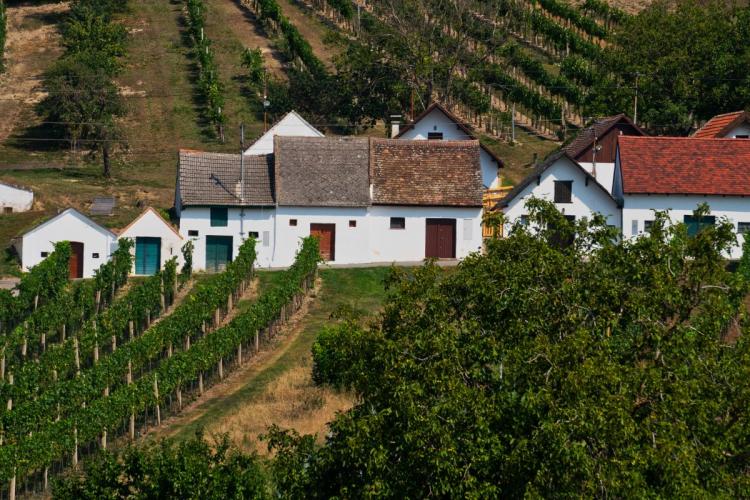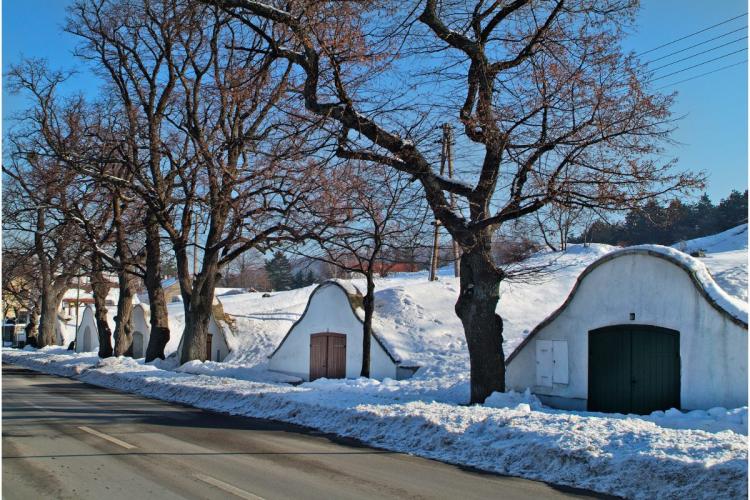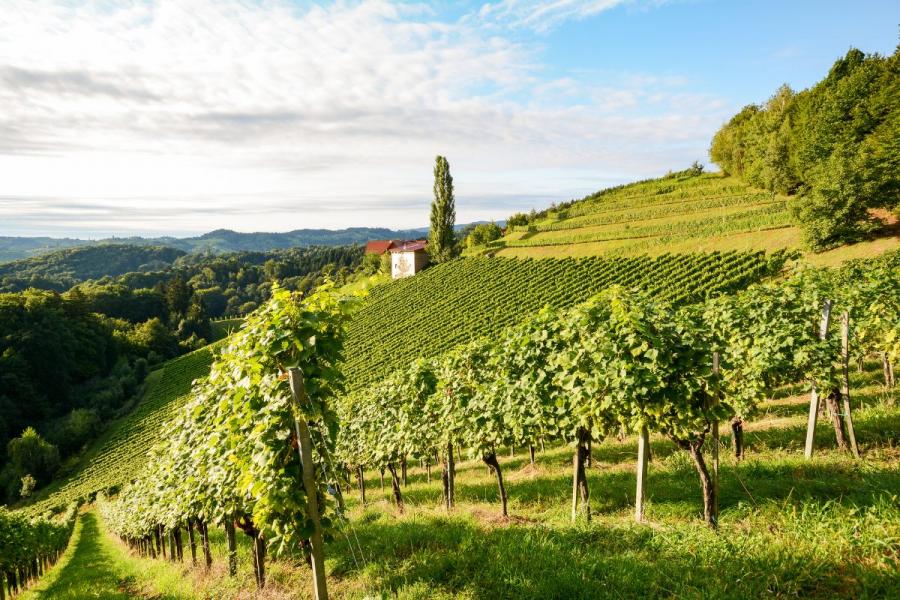Wine in Austria
Discovering the unique flavors of Austrian wine
Austria, a country with a rich 4000-year wine history, boasts an incredible diversity of flavors and styles that charm wine enthusiasts worldwide. From its stunning wine regions to its myriad of indigenous grape varieties, Austrian wines offer a unique experience for the palate. In this journey through the world of Austrian wines, we’ll explore the key wine regions, the vibrant grape varieties, and the evolving styles that define the Austrian wine landscape.
The Austrian are elegant wines
- Explore the unique flavors of Austrian wine, from rare and indigenous grape varieties to white grapes like Grüner Veltliner and Riesling.
- Discover Austria’s renowned wine regions for captivating wines with varying flavor profiles created by its distinctive climate.
- Experience sustainability and innovation in winemaking while pairing these quality styles with food for a memorable dining experience.
A journey through Austria's wine history
Austria’s winemaking history spans a remarkable 4000 years, with its roots tracing back to the Celts and Romans. This ancient tradition experienced a surge in the 16th century, partly due to the cultivation of native Austrian grape varieties. Another revival occurred in the 18th century, which also saw the production of Austrian sparkling wine.
The 20th century brought challenges to the Austrian wine industry, most notably the “antifreeze scandal” in the 1980s, which devastated the market for Austrian wines and almost destroyed the industry overnight. This crisis, however, became an opportunity for Austrian winemakers to reposition themselves as producers of quality wines, focusing on indigenous grape varieties and elevating the standards of production.
Unraveling Austria's diverse grape varieties
Austria takes pride in its diverse range of grape varieties, with Grüner Veltliner, Riesling, Zweigelt, and Blaufränkisch being the most popular. These native Austrian grapes contribute to the unique flavors of Austrian wines, providing a captivating array of styles and aromas.
In addition to these popular varieties, the country also nurtures several rare and indigenous grapes that add to the complexity and allure of Austria’s wine offerings.
White grapes: Grüner Veltliner, Riesling, and mMore
Grüner Veltliner, Austria’s most prevalent white grape variety, is known for its light body, refreshing acidity, and unique peppery flavor. Riesling, another prominent white grape, offers a light body, notable acidity, and distinct floral aroma, often featuring notes of peach, apricot, and honey.
Aside from Grüner Veltliner and Riesling, Austria also cultivates other white grape varieties such as Neuburger, Sauvignon Blanc, and Gewürztraminer. Neuburger is a medium-bodied white wine with crisp acidity and a distinct herbal flavor, often featuring notes of pear, apple, and white pepper.
Sauvignon Blanc is a light-bodied white wine with high acidity and a distinct grassy aroma, often featuring notes of citrus, green apple, and herbs. Among other white wines, the Gewürztraminer is a medium-bodied option with low acidity and a distinct spicy flavor, often featuring notes of lychee, rose, and ginger.
Red grapes: Zweigelt, Blaufränkisch, and St. Laurent
Zweigelt, a popular red grape variety in Austria, can produce a range of wine styles, from unoaked, fruity wines best enjoyed young to full-bodied wines aged in barriques. Generally, Zweigelt wines are known for their violet-red hue and soft tannins. These wines are characterized by cherry and black pepper notes.
Blaufränkisch, one of the key grape varieties, is a prominent red grape characterized by red berries and cherry flavors, with a spicy character. This grape variety can be aged similar to Burgundy wines, adding complexity and depth.
St. Laurent, a red grape variety with a profile similar to Pinot Noir, offers a higher tannin content and more intense fruit flavors. This variety, along with Zweigelt and Blaufränkisch, contributes to the diverse and captivating range of red wines produced in Austria.
Rare and indigenous grapes
Austria is also home to several rare and indigenous grape varieties, such as Zierfandler, Rotgipfler, and Furmint, which contribute to the country’s unique wine styles. Zierfandler has a distinct texture with high acidity. It’s Rotgipfler counterpart, however, is characterized by its aromatic, floral and fruity scents, often resembling honeysuckle, red apple and quince.
Furmint, a white grape variety originating from Hungary, displays complex aromatics such as baked apple, smoke, and linden blossom when vinified dry. When vinified sweet due to botrytis affection, Furmint imparts bracing acidity to balance the sweetness of the wines, showcasing the versatility and uniqueness of this rare grape variety.
The role of climate in Austrian winemaking
Austria’s climate plays a significant role in its winemaking, with a Central European continental climate that impacts the flavors and styles of its wines. Generally, winters are brief and chilly, springs are mild and can be wet at times, summers are lengthy and hot, and autumns are lengthy, with warm days and cool nights. This variety of climatic conditions allows Austrian grape varieties to thrive and develop distinct flavors.
In particular, the diurnal range, or the significant fluctuation in temperature from day to night, enables wines to reach full maturity while preserving remarkable acidity, essential for aging. This climatic influence is especially evident in the wines from the Wachau Valley, where Riesling and Grüner Veltliner flourish under the influence of this temperature variation.
Exploring Austria's renowned wine regions
Austria’s key wine regions include Niederösterreich, Burgenland, Steiermark, and Vienna, each producing diverse styles of wine from a range of grape varieties. From the heart of Austrian wine production in Niederösterreich to the sweet and red wine haven of Burgenland, the vibrant and unique wines of Steiermark, and the wine tradition of Vienna, each region offers a unique perspective on Austrian winemaking.
The wines of Austria are renowned for their quality and diversity, and each region has its own unique selection of single vineyard wines.
Niederösterreich: The heart of Austrian wine production
Niederösterreich, Austria’s largest wine-growing region, is home to eight winegrowing regions whose names may be included on the bottle, provided the wine meets certain quality standards. Riesling and Grüner Veltliner are two of the most widely-grown grapes in this region. It is also renowned for producing elegant red wines, thanks to its cooler climate.
The primary climatic zones of Niederösterreich include the Weinviertel in the north, the Danube River Region to the west of Vienna, and Pannonian Niederösterreich to the southeast. The predominant soil type in Niederösterreich is ‘loess’, which is comprised of wind-blown sediment and comprises approximately half of the vineyards in the region. This type of soil has an impact on the style of wines produced, contributing to the unique flavors and characteristics of Niederösterreich wines.
Burgenland: A Haven for sweet and red wines
Burgenland, located in the east of Austria, is famous for its sweet dessert wines and award-winning red wines made from Blaufränkisch and other grape varieties. The region is divided into three subregions: Mittelburgenland, Neusiedlersee, and Eisenberg.
Mittelburgenland is renowned for its red wine culture and particularly for the Blaufränkisch grape variety. Neusiedlersee is acclaimed for its unctuously powerful, sticky-sweet dessert wines, painstakingly crafted from botrytized Welschriesling grapes, as well as for its Zweigelt-based reds that range from fun and fruit-forward to powerful yet velvety Reserve examples. Additionally, the region offers a variety of sweet wines to satisfy any palate.
Eisenberg, on the other hand, is known for its charming, well-balanced reds crafted from Blaufränkisch grapes, featuring cherry-like fruit, freshness, and earthy minerality.
Steiermark: A Region of vibrant and unique wines
Steiermark, situated near the Slovenian border, is known for its vibrant wines made from both indigenous and international grape varieties, including the unique Schilcher rosé. The region is divided into the wine-producing areas of Vulkanland Steiermark and Weststeiermark. Vulkanland Steiermark cultivates various grape varieties, such as Welschriesling, Chardonnay (Morillon), Weißburgunder (Pinot blanc), and Grauburgunder (Pinot gris).
Weststeiermark is renowned for producing Schilcher, a style of pink-hued rosé made from the ancient Blauer Wildbacher variety. The abundance of extinct volcanoes east of Graz provides Vulkanland Steiermark with fertile soil, imparting a spiciness to the grapes grown in this region. The area is known for its cooler climate, especially during the night. This favourable conditions allows for a longer growing season, resulting in high-quality wines that have good flavour, aroma and body.
Vienna: A capital city with a wine tradition
Vienna, a major European capital, has a thriving wine industry and is known for its traditional field blend called Wiener Gemischter Satz. The Wiener Gemischter Satz is a traditional field blend from Vienna that enshrines field blends into law, resulting in delightful food-friendly wines that combine the appeal of multiple varieties in one glass.
The unique characteristics of Wiener Gemischter Satz wines include their crisp acidity, fresh fruit flavors, and minerality, making them ideal for pairing with a wide range of dishes. These wines are a testament to Vienna’s centuries-old wine tradition and the city’s commitment to preserving its rich winemaking heritage.
Austrian wine classifications and appellations
Austria has a complex wine classification system, including the DAC system, which classifies wines by regional typicity and has granted 17 DACs to 16 winegrowing regions. The DAC system is a geographical appellation system similar to the French AOC or the Italian DOCG, ensuring that wines bearing a DAC designation meet specific quality standards and accurately represent the region’s terroir.
In addition to the DAC system, Austria has other classifications such as Erste Lage and Grosse Lage, which classify vineyards based on their potential to produce high-quality wines. Understanding these classifications and appellations can help wine enthusiasts navigate the diverse world of Austrian wines, discovering unique flavors and styles that represent the country’s rich winemaking tradition.
The evolution of Austrian wine styles
Austrian wine styles have evolved over time, with a focus on quality, indigenous grape varieties, and a range of styles from light and refreshing to bold and complex. This evolution has been influenced by factors such as the cultivation of native Austrian grape varieties, the development of new winemaking techniques, and the influence of international wine trends.
Today, Austrian wines offer a diverse range of flavors and styles that cater to a variety of palates, showcasing the country’s commitment to quality and innovation in winemaking. Whether you prefer the crisp acidity of a Grüner Veltliner, the floral notes of a Riesling, or the bold flavors of a Blaufränkisch, Austria’s wine landscape offers something for everyone.
Sustainability and innovation in Austrian winemaking
Sustainability and innovation are at the forefront of Austrian winemaking, with a new generation of winemakers focusing on environmentally friendly practices and experimenting with new techniques. The ‘Sustainable Austria’ certification program, implemented in 2015, offers winegrowers tools to evaluate their ecological impact and provides guidelines for future development.
Austrian winemakers are also exploring new techniques such as barrel aging, blending, and the utilization of indigenous yeast strains to create unique flavors and styles of wine. This commitment to sustainability and innovation ensures the continued success and growth of the Austrian wine industry, preserving its rich heritage while embracing the future.
Pairing Austrian Wines with Food
Austrian wines offer a diverse range of flavors and styles, making them perfect for pairing with various types of food, from traditional Austrian dishes to international cuisine. The key to successful wine and food pairings is to consider the flavor profile of the dish and the type of wine you are pairing it with, as well as the ingredients used in the dish.
Whether you’re enjoying a classic Wiener Schnitzel with a crisp Grüner Veltliner or a spicy Thai curry with a floral Riesling, Austrian wines provide the perfect accompaniment to your meal. With their unique flavors and versatility, Austrian wines not only enhance the flavors of your dishes, but also elevate your dining experience to new heights.
From Austria's vineyards
From its rich history to its diverse grape varieties, Austrian wines offer a captivating journey through the world of winemaking. With a focus on quality, indigenous grape varieties, and sustainability, Austria’s wine industry has truly come into its own, producing exceptional wines that delight the palate and harmonize perfectly with a wide range of dishes. As you explore the unique flavors and styles of Austrian wines, you’ll discover a world of unparalleled taste and tradition that will leave you eager for more.
Frequently Asked Questions
What is the most popular wine in Austria?
Gruner Veltliner is Austria’s most popular wine, renowned for its dry, peppery taste and high acidity. This white wine can be found across many Austrian wine regions and is a common choice in restaurants.
What is Austrian wine called?
Austrian wine is most famously known for its crisp, refreshing whites made from Grüner Veltliner and Riesling grapes, as well as elegant reds from local varieties like Zweigelt and Blaufränkisch.
Grüner Veltliner is Austria’s most popular white grape variety, deriving from a crossing with Traminer.
What does Austrian wine taste like?
Austrian Grüner Veltliner is a dry white wine with a unique flavor profile of green pepper, lime, citrus notes, and white pepper spice. It is light and zesty, with high acidity, making it an exotic alternative to Sauvignon Blanc.
This wine pairs well with a variety of dishes, from seafood to salads to spicy Asian cuisine. It is also a great choice for sipping on its own. Grüner Veltliner is a versatile and interesting wine that is sure to please.
What is the name of the Austrian pinot noir?
The Austrian pinot noir is called Blauer Spätburgunder, also known as Blauburgunder.
What are the main grape varieties grown in Austria?
The most popular grape varieties grown in Austria are Grüner Veltliner, Riesling, Zweigelt, and Blaufränkisch, complemented by a variety of rare and indigenous varieties.
On the same path is wine in Germany.
On your way back is wine in Europe.



